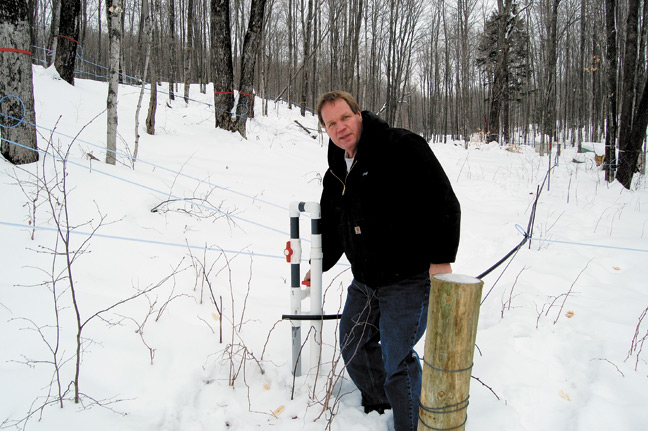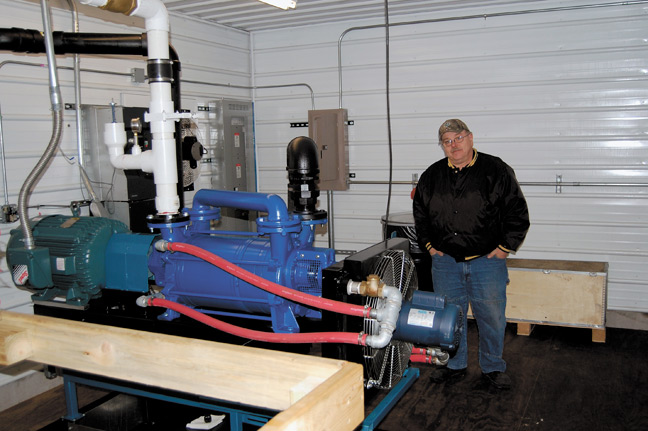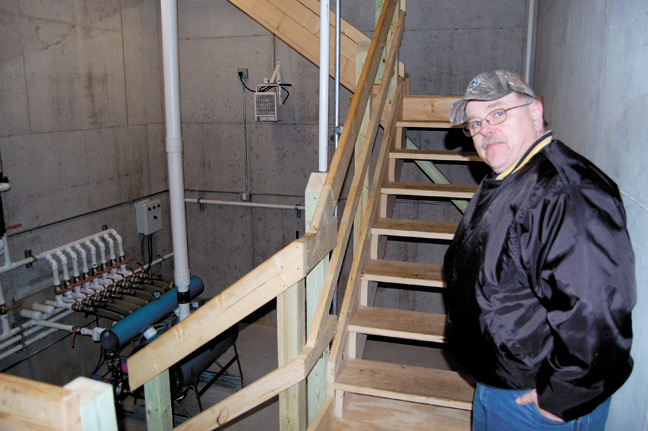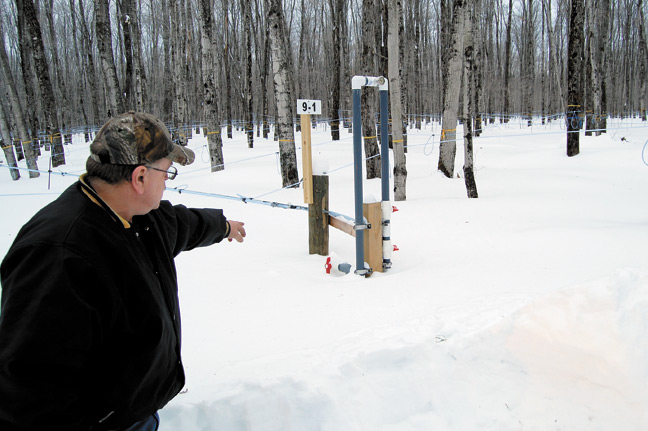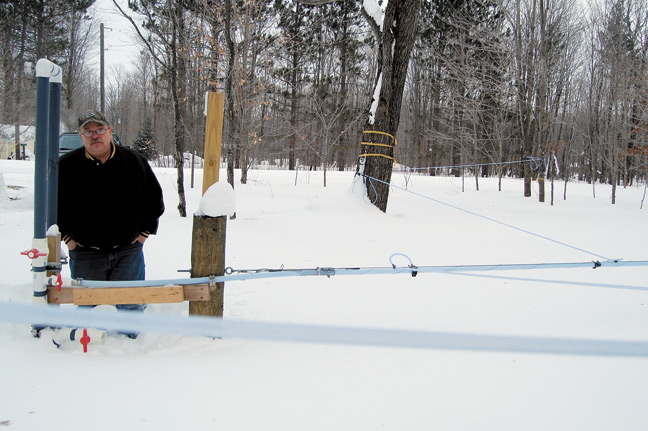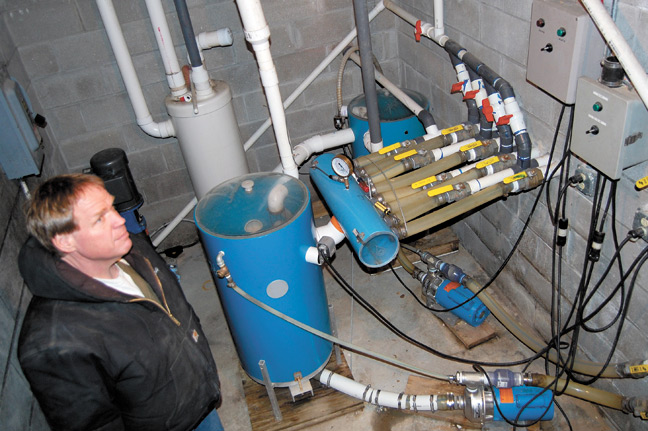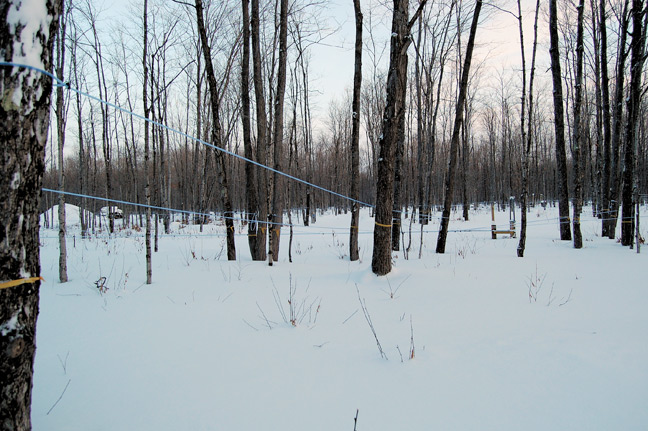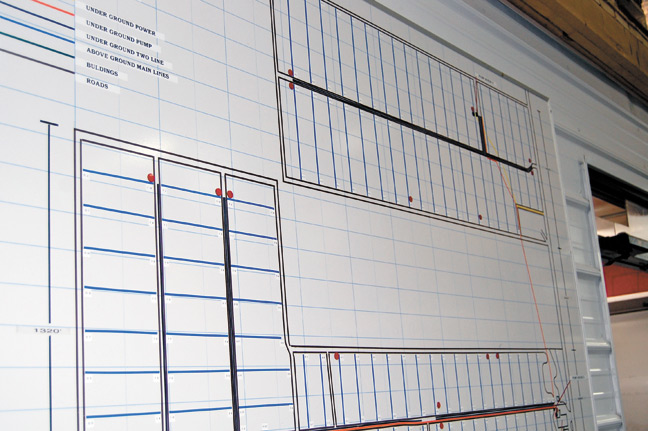Tapping & Tubing
Going underground
Michigan sugarmakers bury their mainlines
By PETER GREGG |
RUDYARD, Mich.—Mike Ross expects his underground pipeline to last a lot longer than he will.
“You get 150-year life out of PVC pipe,” he said during a 2015 tour for The Maple News at his RMG Family Maple orchard in Rudyard, located in the far right corner of the Upper Peninsula of Michigan.
While many parts of his region have plenty of slope and pitch, Ross’ woods and 22,000 taps are on a flat. Very flat.
“Five-eighths of a percent is the flattest we get,” he said.
So to get the pitch he needed Ross got to work with his backhoe and started digging.
Now, all of his mainlines are below ground, as deep at 14 feet in some spots.
“It’s the only way to get pitch,” he said.
Ross maintains a near perfect sugarwoods surrounding his sugarhouse and popular equipment dealership, with lateral lines starting high up on the tree on the edges of the woods and gradually dropping down to a center point, where the PVC pipes protrude out of the ground.
Ross has made a big investment in a concrete bunker, state-of-the-art pump house, equipped with a massive Airtech 40hp pump and CDL releasers, sucking sap out of the woods and sending it to the sugarhouse.
Ross goes on and on about the benefits.
No worries about trees falling on mains. No worries about critters chewing them up. Getting around the woods is easy.
“It’s amazing,” he said. “It’s so convenient.”
Ross is not alone.
Other sugarmakers in the area have buried their pipelines, with similar great results. On nearby St. Joseph Island in Ontario, the Gilbertson family, sugaring off of 50,000 taps, have buried all of their mainlines and were maybe the first in the area to make the investment.
Craig Waldron, owner of the 28,000-tap Far Hills Maple in Burt Lake, Mich. has 1.5 inch wet line PVC and 2-inch dry line PVC running more than a mile from the sugarhouse, all underground. Even though Waldron’s woods have plenty of slope, he still decided to bury the mains.
He says that the underground lines keep the sap at a steady temperature, with barely a two degree temperature fluctuation all season long, regardless of what the temps are above ground. That leads to better performing R/Os, he said.
“Even when we get those 70 degree days, the sap still comes in cool,” he said. “You can plan ahead on how your R/O is going to perform because of the steady temperature.”
Waldron also raves about his access to the sugarbush without high tensioned mainlines strung up throughout.
“It’s opened up our roads immensely and makes it so easy to get around,” Waldron said.
Cleaning is also easy.
Ross says he has the high vacuum suck sponges through the pipeline.
“You need to have that abrasion to scrub them out,” he said.
Of course there is the cost.
Both Ross and Waldron own their own construction firms and have access or own their own excavating equipment. Still, both advocate the idea for sugarmakers with the ability, and who don’t happen to have limestone, granite, slate or other rock underneath their woods. They claim it’s worth it.
“If you are going to go big and do it long term, you gotta do it,” Ross said.
March 2015















